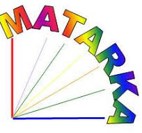Mozaikos területen domináns rágcsálófajok terület-elfoglalásának változása legeltetés, mint zavaró tényező hatására
Absztrakt
A Mattyi-tó menti mozaikos élőhelyen történt legeltetés hatását vizsgáltuk két erdeiegér faj (pirók erdeiegér (Apodemus agrarius) és sárganyakú erdeiegér (Apodemus flavicollis)), valamint a mezei pocok (Microtus arvalis) vonatkozásában. Arra kerestük a választ, hogy a legeltetés miként befolyásolja a három faj terület-elfoglalásának dinamikáját közvetlenül a zavarásnak kitett, valamint azok közelében elhelyezkedő nem diszturbált élőhely foltokban. A becsült terület-elfoglalási valószínűségek megmutatták, hogy a három domináns kisemlősnél az eltérő vegetációstruktúrájú élőhelyeken a terület-elfoglalási dinamika másképpen alakult. A legeltetés és taposás hatása mindhárom fajnál kimutatható volt a terület-elfoglalásban. A pirók erdeiegér lokálisan kihalt két legeltetéssel zavart mintavételi területről, valamint a sárganyakú erdeiegér és a mezei pocok terület-elfoglalásának értéke jelentősen lecsökkent. A - two-species occupancy - modell által becsült terület-elfoglalási valószínűségek különböztek az élőhelyek függvényében. A mezei pocok terület-elfoglalására a nyílt területeken, míg a két erdeiegér faj esetében a sűrűbb vegetációjú élőhelyen kaptunk magasabb értékeket. Összefoglalva eredményeinket megállapítottuk, hogy az intenzív legeltetés, olyan mértékű növényzeti zavarást, degradációt okoz, amely már nem biztosítja a kisemlős populációk gyarapodásához szükséges feltételeket, így ez a fajok lokális eltűnéséhez vezet.
Hivatkozások
Akaike, H. (1973): Information Theory and an Extension of the Maximum Likelihood Principle. In: B. N. PETROV and F. CSAKI, eds. Second International Symposium on Information Theory. Akadémiai Kiadó: 267–281.
Andreassen, H. P. & Ims, R. A. (1998): The effects of experimental habitat destruction and patch isolation on space use and fitness parameters in female root Microtus oeconomus. – Journal of Animal Ecology 67: 941–952.
Bock, C. E., Bock, J. H., Kenney, W. R. & Hawthorne, V. M. (1984): Responses of birds, rodents, and vegetation to livestock exclosure in a semidesert grassland site. – Journal of Range Management 37: 239–242.
Bowers, M. A., Gregario, K., Brame, C. J., Matter, S. F. & Dooley, J. I. J. (1996): Use of space and habitats by meadow voles at the home range, patch and landscape scales. – Oecologia 105: 107–115.
Bullock, J. M. & Pakeman, R. J. (1997): Grazing of lowland health in England: Management methods and their effects on healthland vegetation. – Biological Conservation 79(1): 1–13.
Burel, F., Butet, A., Delettre, Y.R. & de la Pena, N.M. (2004): Differential response of selected taxa to landscape context and agricultural intensification. – Landscape and Urban Planning 67: 195–204.
Carey, A. B., & Harrington, C. A. (2001): Small mammals in young forests: implications for management for sustainability. – Forest Ecology and Management 154: 289–309.
Eccard, J. A., Walther R. B. & Milton, S. J. (2000): How livestock grazing affects vegetation structures and small mammal distribution in the semi-arid Karoo. – Journal of Arid Environments 46: 103-106.
Gliwicz, J. (1981): Competitive interactions within a forest rodent community in a forest-floor small mammal fauna. – Oikos 37: 353-362.
Grant, W. E., Birney, E. C., French, N. R., & Swift, D. M. (1982): Structure and productivity of grassland small mammal communities related to grazing-induced changes in vegetation cover. – Journal of Mammalogy 63: 248–260.
Hines, J. E. (2006): PRESENCE2- Software to estimate patch occupancy and related parameters. USGS-PWRC. http://www.mbr-pwrc.usgs.gov/software/presence.html
Joubert, D. F. & Ryan, P. G. (1999): Differences in mammal and bird assemblages between commercial and communal rangelands in the Succulent Karoo, South Africa. – Journal of Arid Environments 43: 287–299.
Kovács A. (2000): Pratológia. Szt. István Egyetem kiadványa, Gödöllő 10272.
Kozaikiewicz, M., Gortat, T., Kozaikiewicz, A. & Barkowska, M. (1999): Effects of habitat fragmentation on four rodent species in a Polish farm landscape. – Landscape Ecology 14: 391–400.
MacKenzie, D. I., Bailey, L. L. & Nichols, J. D. (2004): Investigating species co-occurrence patterns when species are detected imperfectly. – Journal of Animal Ecology 73: 546–555.
MacKenzie, D. I., Nichols, J. D., Hines, J. E., Knutson, M. G. & Franklin, A. D. (2003): Estimating site occupancy, colonization and local extinction when a species is detected imperfectly. – Ecology 84: 2200–2207.
Molnár, Zs. (1992): A Pitvarosi puszták növénytakarója, különös tekintettel a löszpusztagyepekre. – Botanikai Közlemények 79(1): 19-27.
Montgomery, W. I. (1979): Trap-revelated home range in sympatric populations of Apodemus sylvaticus and Apodemus flavicollis. – Journal of Zoology 206: 203–224.
Mott, J. J. (1985): Mosaic grazing – animal selectivity in tropical savannas of northern Australia Proceedings of the XV. International Grassland Congress, Kyoto, Japan, 1129.
Nyako-Lartey, Q. & Baxter, R. M. (1995): The effects of different grazing regimes on the population dynamics of small mammals in the Eastern Cape. – Transactions of the Royal Society of South Africa 50: 143–151.
Schmidt, N. M. & Olsen, H. (2003): The response of small mammal communities to cattle grazing on a coastal meadow. – Polish Journal of Ecology 51: 79–84.
Schmidt, N. M., Olsen, H., Bildsoe, M., Sluydts, V. & Leirs, H. (2004): Effects of grazing intensity on small mammal population ecology in wet meadows. – Basic and Applied Ecology 6: 57-66.
Silva, M., Hartling, L. & Opps, S. B. (2005): Small mammals in agricultural landscapes of Prince Edward Island (Canada): Effects of habitat characteristics at three different spatial scales. – Biological Conservation 126: 556–568.
Spooner, P, Lunt, I. & Robinson, W. (2002): Is fencing enough? The short-term effects of stock exclusion in remnant grassy woodlands in southern NSW. – Ecological Management and Restoration 3(2): 117–126.
Sullivan, T. P. & Sullivan, D. S. (2001): Influence of variable retention harvest on forest ecosystems. II. Diversity and population dynamics of small mammals. – Journal of Applied Ecology 38: 1234–1252.
Szacki, J. & Liro, A. (1991): Movements of small mammals in the heterogenous landscape. – Landscape ecology 5(4): 219–224.
Vinczeffy, I. & Nagy, G. (1993): Szempontok a legeltetéses állattartás értékeléséhez. – Legeltetéses Állattartás 309–364.
Zima, J. (1999): Microtus arvalis (Pallas 1778). In: Mitchell-Jones A. J. et al. (eds), The Atlas of European Mammals. Academic Press London: 228–229.






